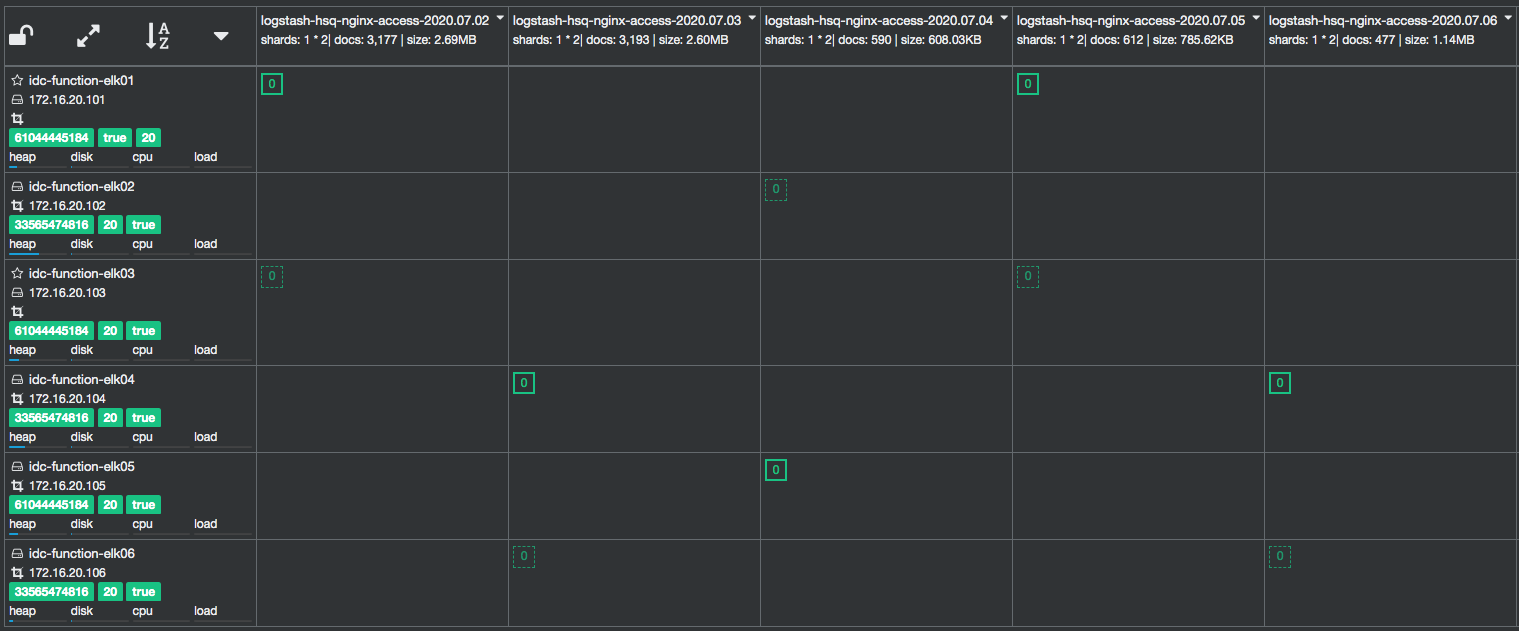Filebeat+logstash收集Nginx访问日志
环境:
Filebeat: 7.0
Logstash:7.0
elasticsearch:7.0
介绍
logstash默认自带了apache标准日志格式的grok正则表达式:
1 | COMMONAPACHELOG %{IPORHOST:clientip} %{USER:ident} %{NOTSPACE:auth} \[%{HTTPDATE:timestamp}\] "(?:%{WORD:verb} %{NOTSPACE:request}(?: HTTP/%{NUMBER:httpversion})?|%{DATA:rawrequest})" %{NUMBER:response} (?:%{NUMBER:bytes}|-) |
对于 nginx 标准日志格式,可以发现只是最后多了一个 $http_x_forwarded_for 变量。所以 nginx 标准日志的 grok 正则定义是:
1 | MAINNGINXLOG %{COMBINEDAPACHELOG} %{QS:x_forwarded_for} |
如果Nginx日志格式不是标准的日志格式,则需要自行编写grok正则,匹配日志内容.
但是grok正则表达式不容易上手,非常难写.复杂不说,而且logstash使用正则表达式来处理日志格式,其性能也会受到很大的影响.
所以这里推荐另外一种收集方式.
本文档参考博客:https://www.popyone.com/post/13.html
本文档参考书籍:ELK权威指南中文版第二版
json格式的Nginx日志
对 logstash 来说,nginx 日志还有另一种更简便的处理方式。就是自定义日志格式时,通过手工拼写,直接输出成 JSON 格式:
1 | log_format json escape=json '{"@timestamp":"$time_iso8601",' |
escape=json 参数,在配置日志格式时加上此参数可以不转义变量内容
nginx虚拟主机的access_log应用了Json的格式后,日志格式自动转换成了json格式了
1 | {"@timestamp":"2019-01-31T11:26:48+08:00","@source":"192.168.12.200","hostname":"proxy.server","ip":"","client":"183.3.239.170","request_method":"GET","scheme":"http","domain":"www.51hangyu.com","referer":"http://www.51hangyu.com/chat","request":"/static/static/css/main.97f6b853.css","args":"","size":460413,"status": 200,"responsetime":0.108,"upstreamtime":"0.002","upstreamaddr":"192.168.12.15:80","http_user_agent":"Mozilla/5.0 (compatible; MSIE 9.0; Windows NT 6.1; Trident/5.0)"} |
这样一来在客户端就自动转换成了json格式,无需logstash通过正则去过滤和匹配日志内容,大大提高logstash的收集性能
Filebeat配置
filebeat.yml配置如下:
1 | - type: log |
logstash配置
在logstash的con.d下新建一个Nginx_access的配置文件
1 | [root@idc-function-elk07 elasticsearch]# mkdir /etc/logstash/conf.d/nginx_access.conf |
配置文件内容如下:
1 | [root@idc-function-elk07 elasticsearch]# cat /etc/logstash/conf.d/nginx_access.conf |
建议logstash先将日志输出到控制台测试,确定无误后再输出到es.输出到控制台只需要将output字段修改为:
2
>
验证
打开es集群的http界面,可以看到产生了索引分片

打开kibana配置了logstash-hsq-nginx-access-*的索引以后,可以看到展示的日志:

多个http_x_forwarded_fors上游IP的Nginx访问日志
iqg业务的Nginx经过了2层代理(阿里云SLB—–>Kong—->本地Nginx).所以上游IP有2个,使用json格式转换后,Nginx的访问日志内容如下:
1 | {"@timestamp":"2020-08-14T03:15:38+08:00","@source":"10.111.10.35","hostname":"iqg-new1","ip":"183.192.43.174, 100.117.85.32","client":"10.111.30.194","request_method":"GET","scheme":"http","domain":"api.v4.iqianggou.com","client_host":"v4.api.iqg-new1","referer":"","request":"/open/user/clientupload?......} |
可以看到IP字段包含了用户真实IP和阿里云SLB的IP.这样的访问日志上传到Logstash后,geoip模块无法处理IP字段.所以需要在logstash中解析和处理IP字段,
但是还有一个更好的办法,不需要logstash去单独处理,减少logstash的负担.可以在nginx本地将处理IP字段.
在nginx.conf配置文件的http字段中添加以下配置:
1 | http { |
以上map函数解析$http_x_forwarded_for字段,当字段为空时,使用$remote_addr映射为$clientRealIp.否则使用$firstAddr映射.
同时修改json日志格式,使用$clientRealIp替代$http_x_forwarded_for
1 | log_format json escape=json '{"@timestamp":"$time_iso8601",' |
重启Nginx
1 | sudo nginx -t |
再次查看日志,发现此时ip字段只保留了公网IP地址,去掉了阿里云的SLB内网地址
1 | {"@timestamp":"2020-08-14T09:46:59+08:00","@source":"10.111.10.35","hostname":"iqg-new1","ip":"113.247.47.77","client":"10.111.30.194","request_method":"GET","scheme":"http","domain":"api.v4.iqianggou.com","client_host":"v4.api.iqg-new1","referer":"https://servicewechat.com/wxa36b4671d95ba753/86/page-frame.html","request":"/api/item?......} |

